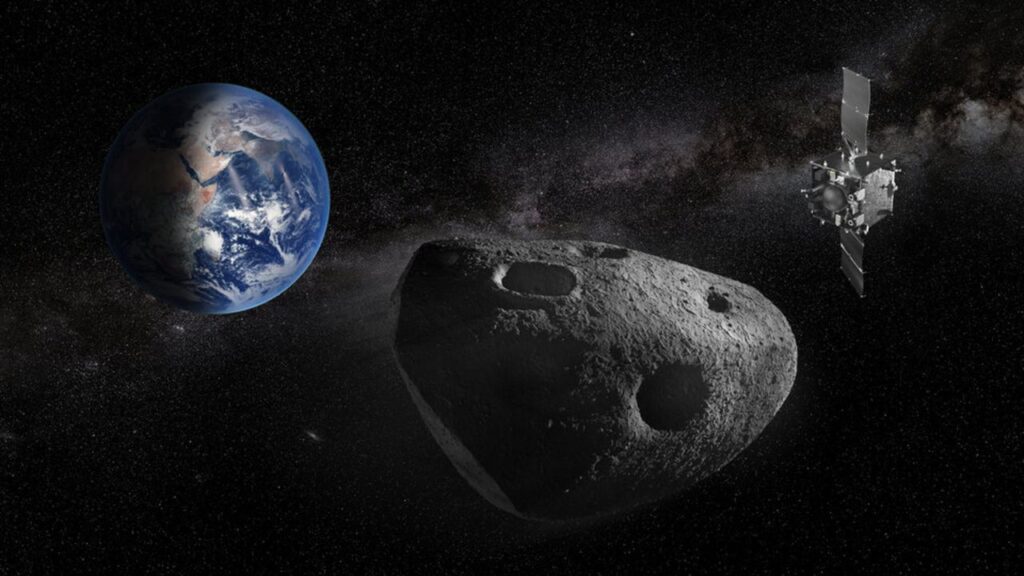
Recent research has provided significant insights into asteroid dynamics, crucial for developing strategies to prevent potential impacts on Earth. Two studies presented at the Europlanet Science Congress in Helsinki last month explored how an asteroid’s spin and impact locations can influence deflection missions. Understanding these factors could be vital to protecting our planet from a catastrophic collision.
In the first study, researchers led by Wen-Han Zhou from the University of Tokyo utilized data from the now-retired Gaia mission of the European Space Agency. They examined the relationship between an asteroid’s rotation and its history of collisions with other celestial bodies. Their findings suggest that an asteroid’s spin is influenced by a balance between external impacts and internal friction, leading to distinct rotation patterns.
Zhou’s team discovered that some asteroids rotate uniformly while others exhibit chaotic motion. Their analysis highlighted a cosmic “tug of war” between two forces: collisions that disrupt stable rotation and internal friction that smooths the spin. Using advanced modeling and machine learning techniques, they identified a clear distinction in rotation speeds among asteroids. The study revealed that slower rotators are more susceptible to wobbling from impacts, while faster rotators tend to resist disturbances.
Moreover, the research indicated that many asteroids are not solid masses but rather “rubble piles” of loosely bound rock and dust. This is a critical distinction for planetary defense strategies, as the response of a fragile asteroid to a spacecraft impact would differ greatly from that of a dense, solid body.
As new sky surveys become available, including those from the upcoming Vera C. Rubin Observatory, scientists anticipate applying these methods to millions of asteroids, enhancing our understanding of their characteristics and evolution.
Identifying safe impact zones is the next crucial step. In the second study, a team led by Rahil Makadia from the University of Illinois at Urbana-Champaign developed a method to determine optimal striking points on an asteroid during a deflection mission. Their research emphasizes that not all impact sites are equally effective. Hitting the wrong area could inadvertently redirect an asteroid towards Earth, a scenario known as a gravitational keyhole.
Makadia’s team created probability maps to guide mission planners, simulating various impact scenarios based on the lessons learned from NASA’s DART mission, which successfully impacted the asteroid Dimorphos in September 2022. By analyzing hundreds of millions of kinetic-impact simulations, they were able to identify the safest zones for a spacecraft to strike, thus minimizing the risk of the asteroid being nudged back into a dangerous trajectory.
Utilizing data from the OSIRIS-REx mission, which recently returned samples from the asteroid Bennu, Makadia’s team was able to refine their models. Earlier projections had suggested several potential gravitational keyholes in Bennu’s path that could redirect it toward Earth in the 22nd century. However, the precise measurements from OSIRIS-REx allowed the researchers to eliminate many uncertainties and pinpoint safer impact targets.
The research findings signify a pivotal advance in planetary defense, indicating that with improved observational techniques and simulations, scientists can effectively plan future deflection missions. Makadia stated, “With these probability maps, we can push asteroids away while preventing them from returning on an impact trajectory, protecting the Earth in the long run.”
As next-generation telescopes continue to uncover millions more asteroids, studies like these are helping craft a comprehensive planetary defense strategy. The insights gained from understanding asteroid rotation and impact dynamics could prove essential in ensuring the safety of our planet from potential cosmic threats.







